FLOWER ANALYSIS WORKSHEET
Flower #1: wild geranium
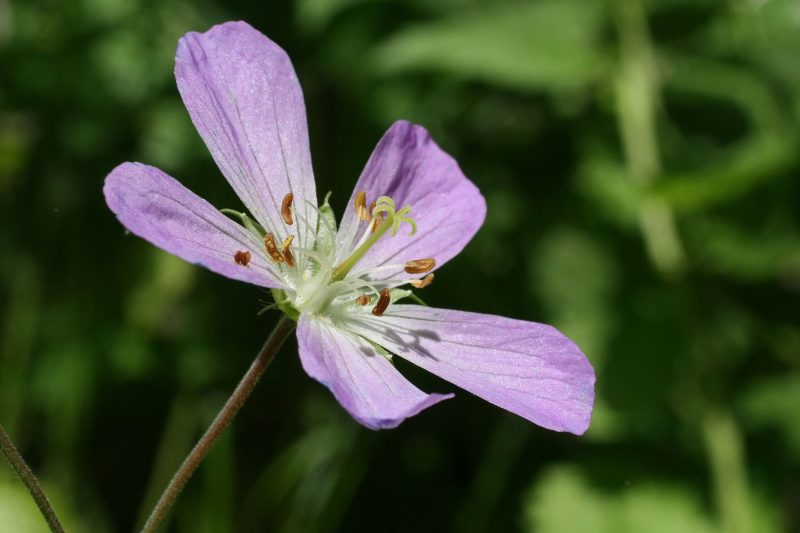
wild geranium, Geranium maculatum
This flower was found here (location and habitat/environment): in my native plant garden, but also seen at Batelle Darby MetroPark.
It is on page 260 in Newcomb’s Wildflowers.
Common name: wild geranium or spotted cranesbill Scientific name: Geranium maculatum.
Corolla: number of petals 5 separate or fused? separate
Calyx: number of sepals 5 separate or fused? separate
Adroecium: number of stamens 10 separate, fused or arranged in any special way?
separate, and attached between the petals and the pistil, in a whorl around the pistil.
Gynoecium type: unicarpellate, apocarpous, or syncarpous (and # of carpels =_____)
How can you tell? (Cite features that indicate the number of carpels.)
syncarpous, consisting of 5 carpels (as evidenced by the 5 stigma lobes and the 5-angled ovary. Also, a cross-section of the ovary shows 5 chambers.
Flower type/ovary position: Hypogynous, or perigynous or epigynous? hypogynous
Flower symmetry: actinomorphic (regular) or zygomorphic (irregular)? actinomorphic (regular)
Additional distinctive features: the flowers exhibit “protandry, being first male with ripe stamens but tightly closed stigma lobes, then older flowers with spent stamens have expanded, receptive stigma lobes.
FLOWER ANALYSIS WORKSHEET
Flower #2: Amur honeysuckle
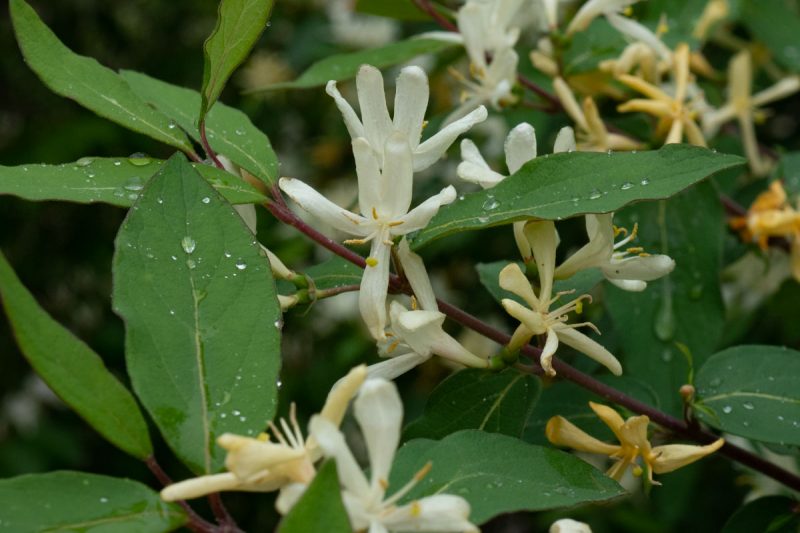
Amur honeysuckle, Lonicera maackii
Note the zygomorphic corollas.
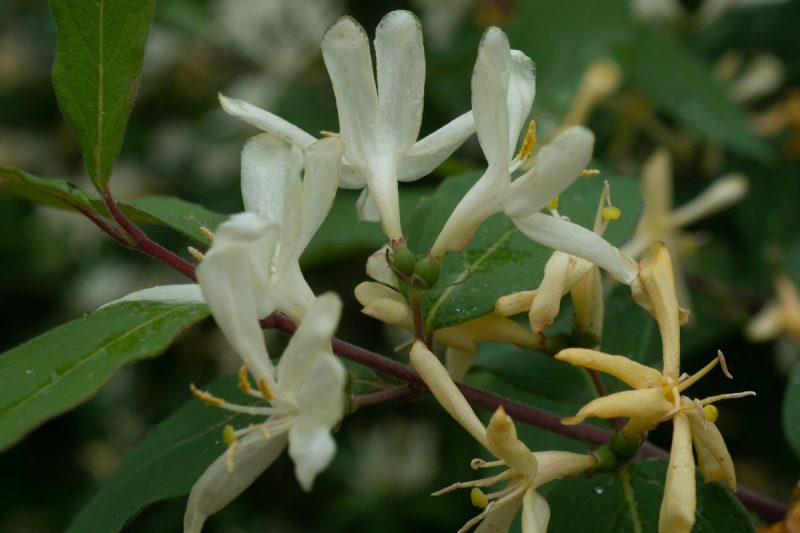
The flowers are in pairs, with fused ovaries!
This flower was found here (location and habitat/environment): Disturbed roadside along Alum Creek reservoir in Delaware County.
It is on page 73 in( Petrides Trees & Shrubs (closely related species included)
Common name Amur honeysuckle Scientific name: Lonicera maackii
Corolla: number of petals 5 separate or fused? fused, with a long tube and 5 flared limbs
Calyx: number of sepals 5 –very small (obsolete) separate or fused? difficult to ascertain owing to minute size
Adroecium: number of stamens 5 separate, fused or arranged in any special way? separate, attached to corolla-tube
Gynoecium type: unicarpellate, or syncarpous: appears to be unicarpellate but isn’t (said to be 3-5-loculed) (Lowden 2020, Manual of the Vascular Plants of Franklin County Ohio) (LINK)
Flower type/ovary position: epigynous with an inferior ovary
Flower symmetry: zygomorphic (bilateral)
Additional distinctive features: The flowers are in pairs, fused by the ovaries!
FLOWER ANALYSIS WORKSHEET
Flower #3: golden Alexanders
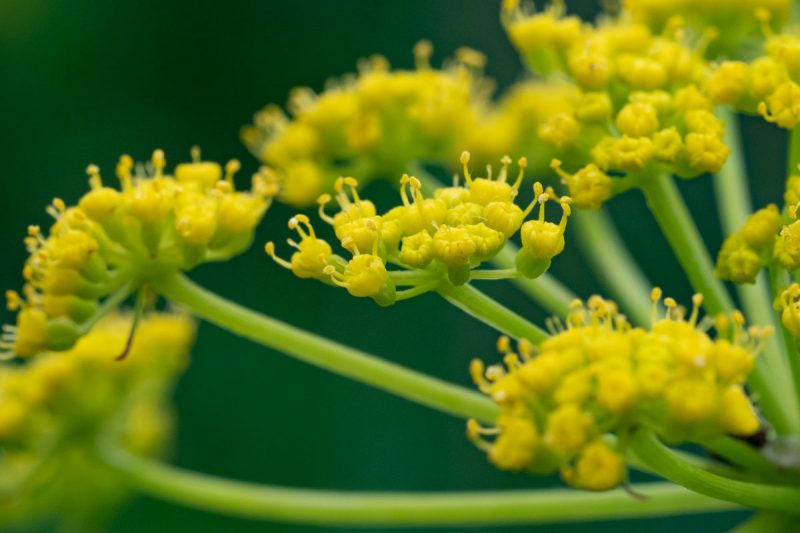
golden Alexanders, Zizia aurea
This flower was found here (location and habitat/environment): a backyard prairie in Columbus seeded with native wildflowers
It is on page 226 in Newcomb’s Wildflowers or page ______
Common name golden alexanders Scientific name: Zizia aurea
Corolla: number of petals 5 separate or fused? separate
Calyx: number of sepals 5 separate or fused? they seem separate, but are so small it is difficult to judge
Adroecium: number of stamens: 5, separate, alternating with the petals
Gynoecium type:syncarpous, with 2 carpels (evident by deep ridge in center of ovary, and 2-branched stigma
Flower type/ovary position:epigynous with an inferior ovary
Flower symmetry: actinomorphic (regular)
Additional distinctive features: The style base is expanded into a knob-like structure at the top of the flower.
FLOWER ANALYSIS WORKSHEET
Flower #4: black cherry
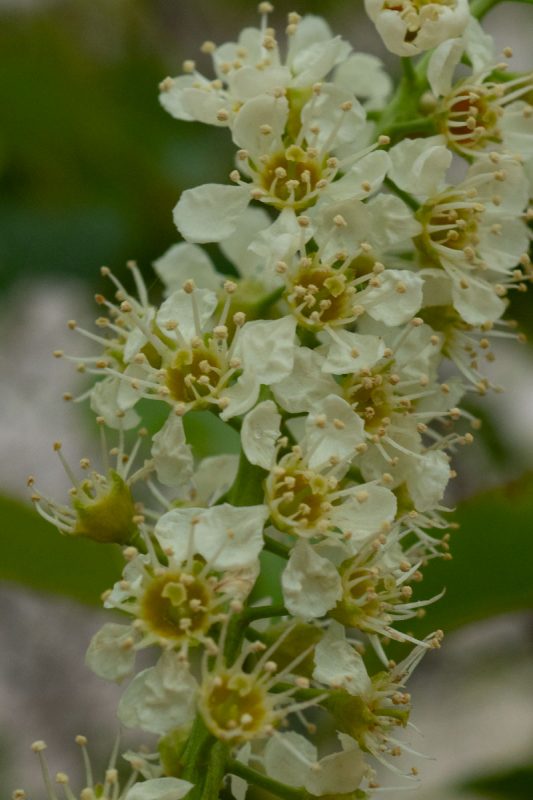
black cherry, Prunus serotina
This flower was found here (location and habitat/environment): open sparsely wooded hillside in Delaware near Alum Creek reservoir
It is on page 236 in Petrides Trees & Shrubs.
Common name black cherry Scientific name: Prunus serotina
Corolla: number of petals 5 separate or fused? separate
Calyx: number of sepals 5 separate or fused? separate
Adroecium: number of stamens 10, separate, inserted on the rim of the cup-like hypanthium
Gynoecium type: unicarpellate
Flower type/ovary position: perigynous, with the most beautiful clearly delineated cup-like hypanthium that you can imagine! It looks like a teacup with a ping-pong ball (the ovary) sitting at the bottom.
Flower symmetry: actinomorphic (regular)
Additional distinctive features: The gynoecium is unicarpellate; that was a pleasant surprise. (I looked it up here: (Lowden 2020, Manual of the Vascular Plants of Franklin County Ohio) (LINK).
FLOWER ANALYSIS WORKSHEET
Flower #: autumn-olive

Autumn-olive, Eleagnus umbellata
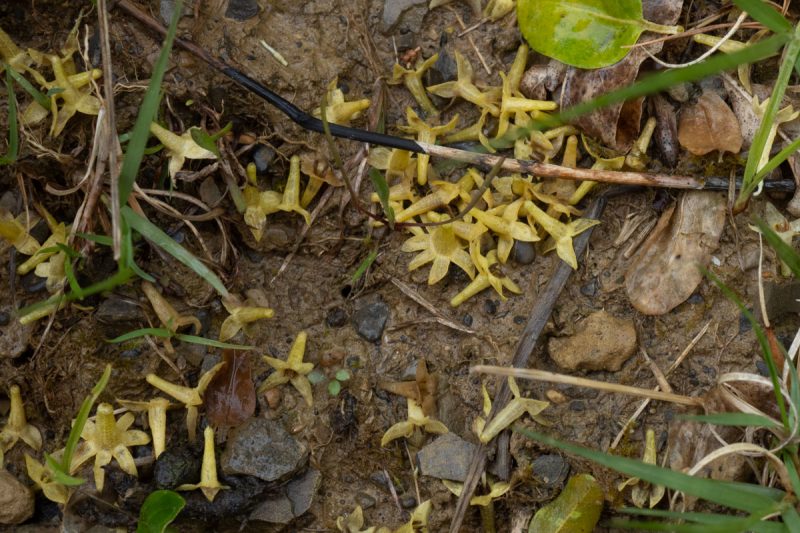
Autumn-olive; not only is it a weed, it’s a litterbug!
This flower was found here (location and habitat/environment): dry hillside with thin soil in Delaware
Page 293 in( Petrides Trees & Shrubs.
Common name: Autumn-olive Scientific name: Eleagnus umbellata
Corolla: number of petals 4, fused (look at the photo of the dehisced corollas on the ground!
Calyx: number of sepals 0; the calyx appears to be lacking, but this interpretation is apparently incorrect. According to Lowden 2020, Manual of the Vascular Plants of Franklin County Ohio (LINK), the corolla is lacking an there are 4 sepals! Whoa!
Adroecium: number of stamens: 4 separate,attached to the calyx tube.
Gynoecium type: unicarpellate.
Flower type/ovary position: certainly appears epigynous, but again, a surprise from Lowden, who asserts that the flowers are perigynous BUT that the hypanthium stays attached and surrounds the fruit.
Flower symmetry: actinomorphic (radial)
Additional distinctive features: As mentioned, the petal-like sepals are surprising.
FLOWER ANALYSIS WORKSHEET
Flower #: barren strawberry
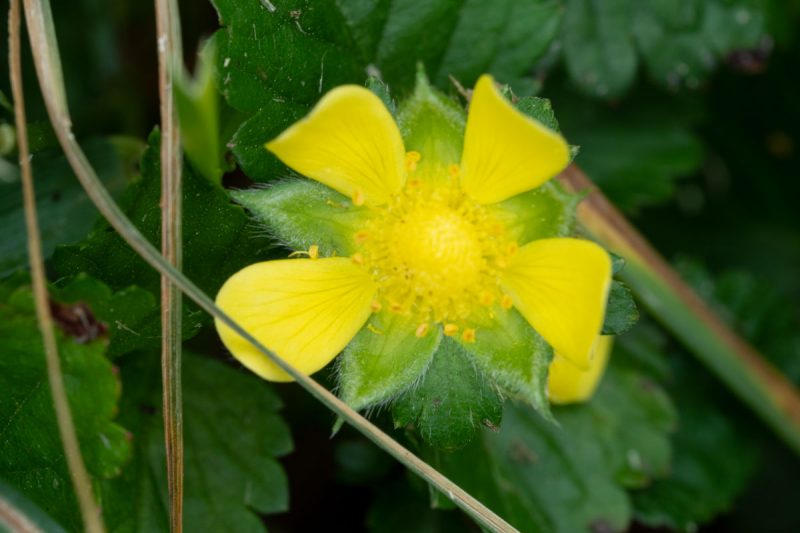
mock strawberry, Potentilla indica
This flower was found here (location and habitat/environment): a weed at the edge of a garden plot in Columbus
It is on page 240 in Newcomb’s Wildflowers (as Duchesnia indica).
Common name mock strawberry Scientific name: Potentilla indica
Corolla: number of petals 5, separate
Calyx: number of sepals 5, separate
Adroecium: number of stamens numerous, high indefinite number, spirally arranged at periphery of dome-like receptacle.
Gynoecium type: apocarpous
Flower type/ovary position: perigynous, but just barely so, with a short hypanthium extending approx 1mm off the attachment to the receptacle.
Flower symmetry: actinomorphic (regular)
Additional distinctive features: A typical apocarpous gynoecium , with numerouis carpels spirally arranged on a dome-shaped recptacle.
FLOWER ANALYSIS WORKSHEET
Flower # Canada anemone
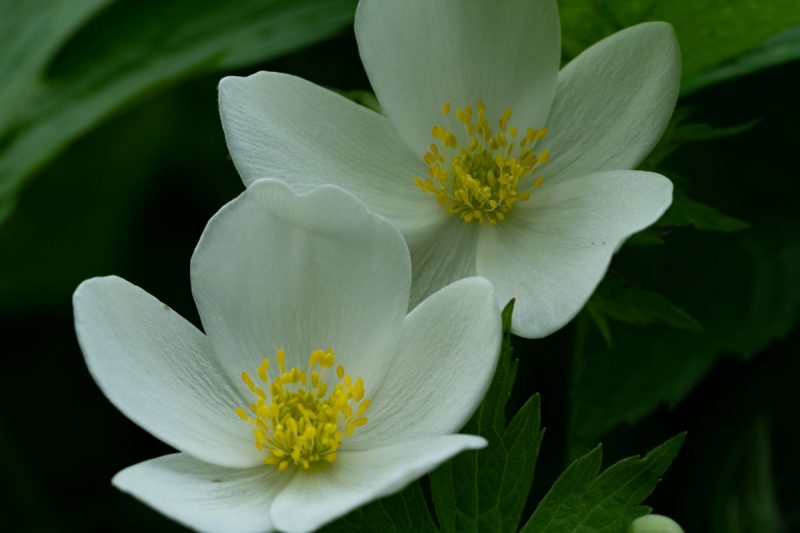
Canada anemone, Anemone canadensis
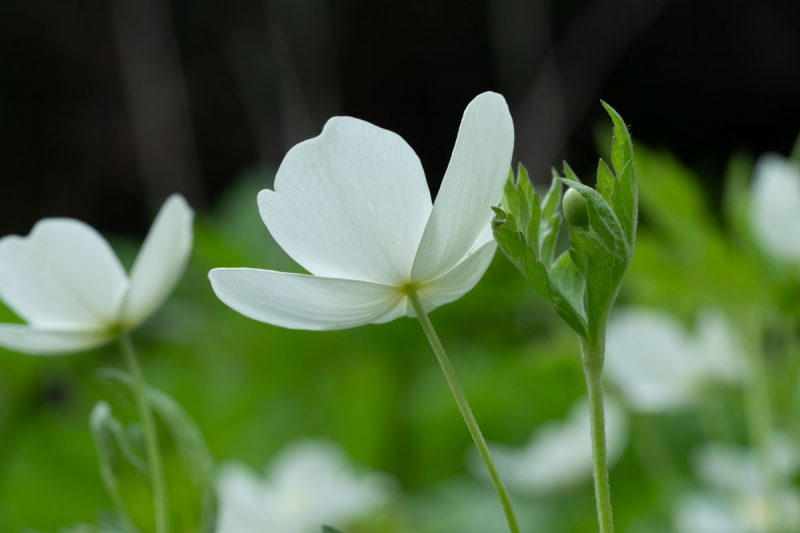
See, no other perianth parts.
These 5 white jobaroos are sepals!
This flower was found here (location and habitat/environment): prairie patch in an urban backyard stocked with native plants.
It is on page 280 in Newcomb’s Wildflowers.
Common name Canada anemone Scientific name: Anemone canadensis
Corolla: number of petals 0, none, nada, zip, narry a one!
Calyx: number of sepals 5, separate
Adroecium: number of stamens: high indefinite number (too many to count), separate , spirally arranged at the periphery of a dome-like receptacle
Gynoecium type: apocarpous, a high indefinite umber of carpels spirally arranged at the center of a dome-like receptacle
Flower type/ovary position: Hypogynous
Flower symmetry: actinomorphic (regular)
Additional distinctive features: Genrally, when there is only one series of perianth parts, they are sepal, even when they are colorful like petals normally are. That is the case with this anemone.
FLOWER ANALYSIS WORKSHEET
Flower # 8: ground-ivy
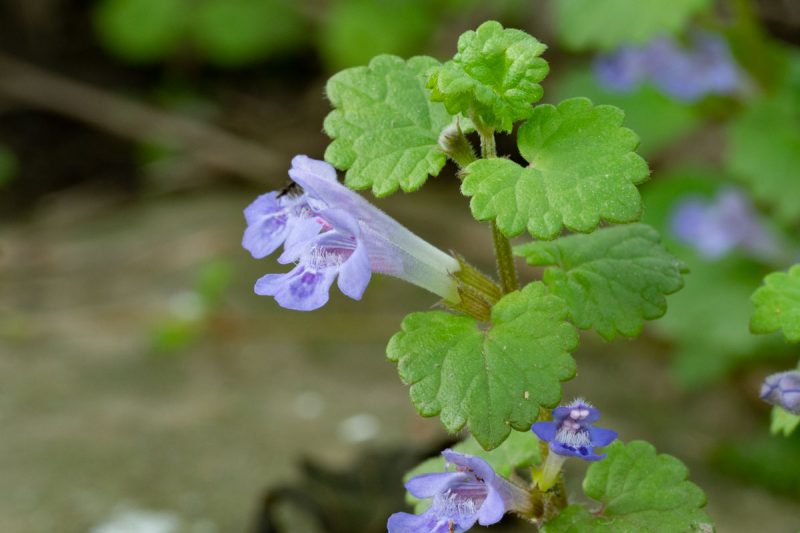
ground-ivy, Glechoma hederacea
This flower was found here (location and habitat/environment): in am urban lawn where it is a weed.
It is on page 86 in Newcomb’s Wildflowers.
Common name ground-ivy Scientific name: Glechoma hederacea
Corolla: number of petals 5, fused.
Calyx: number of sepals 5, fused
Adroecium: number of stamens: 2, inserted on the corolla tube.
Gynoecium type: syncarpous, with 2 carpels that are each deeply 2-lobed (thus appearing 4-lobed.
Flower type/ovary position: Hypogynous with a superior ovary
Flower symmetry: zygomorphic (irregular)
Additional distinctive features: The flowers of this typical mint are 2-lipped, with the lower lip a sort of landing platform for visiting insects.
